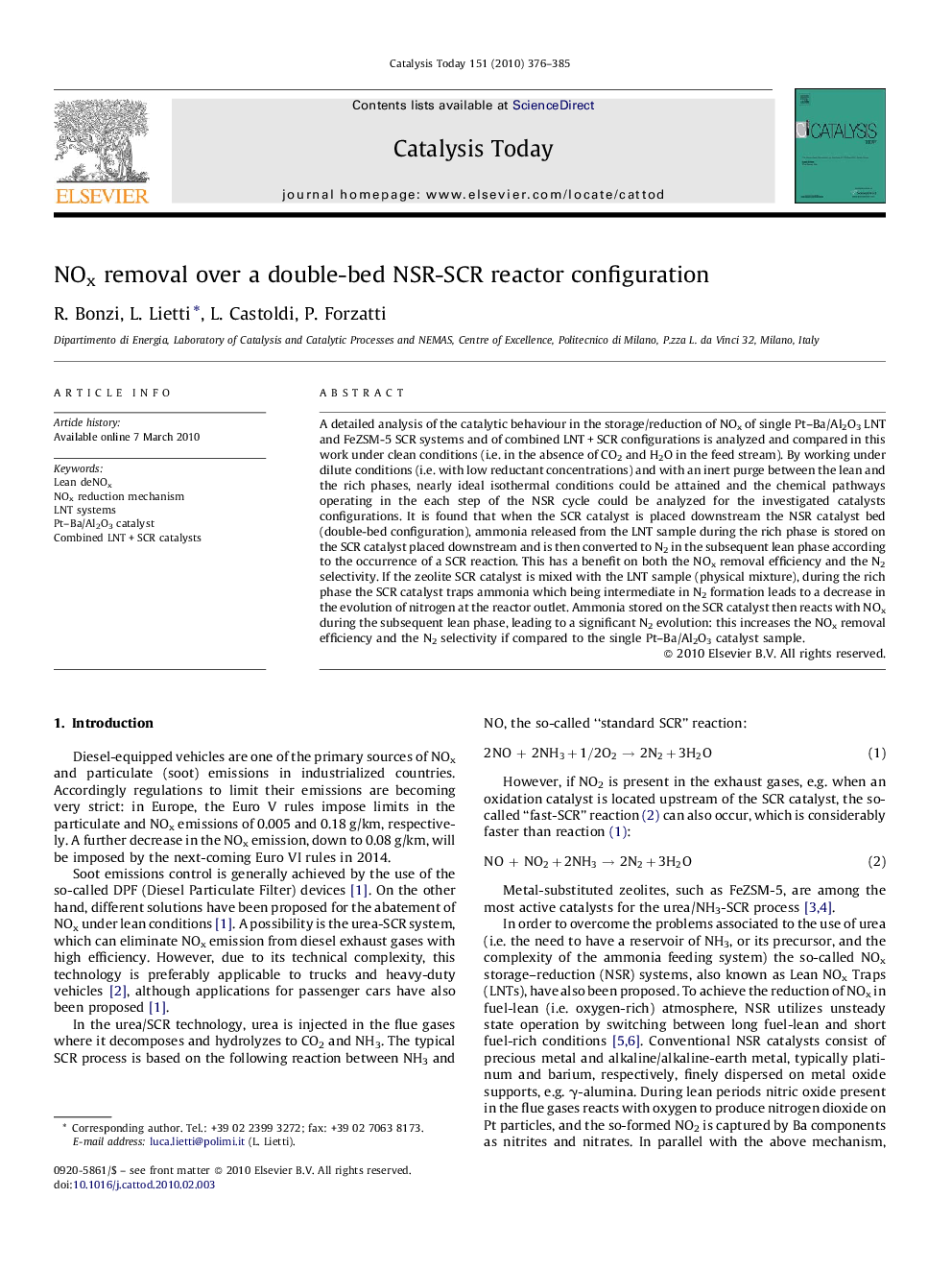| Article ID | Journal | Published Year | Pages | File Type |
|---|---|---|---|---|
| 56549 | Catalysis Today | 2010 | 10 Pages |
A detailed analysis of the catalytic behaviour in the storage/reduction of NOx of single Pt–Ba/Al2O3 LNT and FeZSM-5 SCR systems and of combined LNT + SCR configurations is analyzed and compared in this work under clean conditions (i.e. in the absence of CO2 and H2O in the feed stream). By working under dilute conditions (i.e. with low reductant concentrations) and with an inert purge between the lean and the rich phases, nearly ideal isothermal conditions could be attained and the chemical pathways operating in the each step of the NSR cycle could be analyzed for the investigated catalysts configurations. It is found that when the SCR catalyst is placed downstream the NSR catalyst bed (double-bed configuration), ammonia released from the LNT sample during the rich phase is stored on the SCR catalyst placed downstream and is then converted to N2 in the subsequent lean phase according to the occurrence of a SCR reaction. This has a benefit on both the NOx removal efficiency and the N2 selectivity. If the zeolite SCR catalyst is mixed with the LNT sample (physical mixture), during the rich phase the SCR catalyst traps ammonia which being intermediate in N2 formation leads to a decrease in the evolution of nitrogen at the reactor outlet. Ammonia stored on the SCR catalyst then reacts with NOx during the subsequent lean phase, leading to a significant N2 evolution: this increases the NOx removal efficiency and the N2 selectivity if compared to the single Pt–Ba/Al2O3 catalyst sample.
